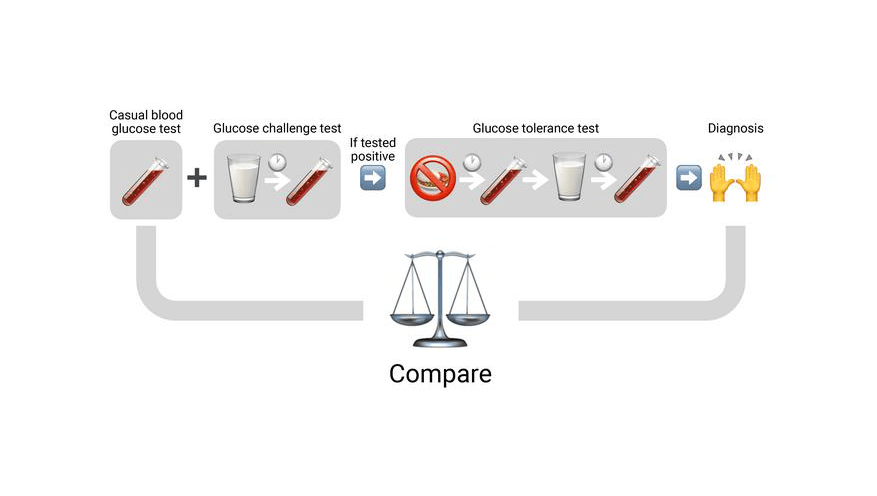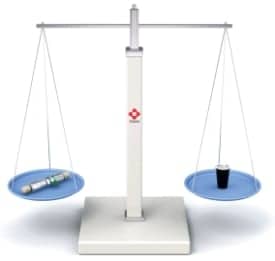Summary: A new study from Kobe University reveals that casual blood glucose testing, used in gestational diabetes screening, misses 70% of cases, urging healthcare professionals to adopt more accurate testing methods to reduce pregnancy complications.
Takeaways:
- Casual blood glucose testing frequently misses gestational diabetes cases, with 70% of diagnoses being overlooked according to the study.
- The study emphasizes the need for obstetricians to rely on more accurate screening methods, such as the glucose tolerance test, to detect gestational diabetes effectively.
- Researchers hope their findings will prompt changes in guidelines to improve maternal and child health by preventing gestational diabetes-related complications and long-term diabetes risks.
When screening pregnant women for gestational diabetes, casual blood glucose testing misses 70% of the cases. A new study from Kobe University study aims to encourage obstetricians to depend on more reliable tests to help prevent pregnancy complications and the development of type II diabetes in mothers and children.
Impact of Gestational Diabetes
Gestational diabetes mellitus is a condition where previously healthy women exhibit high blood sugar levels during pregnancy. If treated, most women deliver healthy babies, but if left unmanaged, this can lead to pregnancy complications, babies growing larger than usual, and increased risk of developing type II diabetes later for both the mother and the child. Therefore, the International Association of the Diabetes and Pregnancy Study Groups recommends that all women who have not been diagnosed with diabetes previously undergo a so-called oral glucose tolerance test between weeks 24 and 28.
Diagnosing Diabetes
This multi-step procedure requires women to fast for 8-12 hours before a baseline blood sample is taken, then they drink a solution containing a standardized amount of glucose, and after a set amount of time another blood sample is taken to see how well the body metabolizes the sugar. However, a large fraction of health facilities use a much simpler “casual” blood glucose test for which blood is taken and analyzed for glucose levels only once and at any time without consideration to what or when the women have eaten before, making this both cheaper and quicker. Only if women test positive in that simple screening, they are asked to undergo the more rigorous glucose tolerance test.
The Kobe University obstetrician Kenji Tanimura, MD, PhD, and his graduate student Masako Tomimoto, MD, were concerned that this two-tier approach potentially misses cases with diabetes in the first screening. Working in the perinatal center of Kobe University Hospital, they combined the casual blood glucose screening and another standard test for gestational diabetes, the much more sensitive glucose challenge test, into a single protocol for all participating women visiting their center. Tanimura, Tomimoto, and their team then asked women who tested positive in the glucose challenge test to also take the actual glucose tolerance test, which allowed them to ascertain how many positive cases would have been missed had they used only the convenient casual blood glucose screening.
Their results, published in the Journal of Diabetes Investigation, showed that out of the 99 women who in the end were diagnosed with gestational diabetes mellitus, 71.7% had blood sugar levels in their first blood sample that would have resulted in a negative (no diabetes) diagnosis.
“Although there have been studies showing that the casual blood glucose test is less sensitive than others, no studies have directly compared the results in the same individuals,” says Tomimoto. “Our study confirmed that this screening method, which is widely used in practice, frequently misses the condition it is meant to detect.”
Additional Study Results
To see how widespread this issue is, the team also conducted a survey amongst health care facilities in Hyogo Prefecture, where Kobe University is based. They found that 43% of the respondents who used blood glucose tests relied only on the casual screening.
“In Japan, where about half of all deliveries take place in obstetric clinics rather than in hospitals, the more accurate but complicated and time-consuming tests are not widely used,” says Tomimoto. However, this is not a problem unique to Japan, as similar surveys showed that in the UK, 48% of clinics also rely on only the casual blood glucose test for the first screening.
Tanimura says about the implications of their study: “We would like to educate healthcare professionals and patients about this danger and encourage them to promote the use of the more accurate glucose tolerance screening method. We hope that our data can contribute to improvements in the management system and to the revision of the guidelines for gestational diabetes mellitus screenings. The goal is to protect more mothers and babies from gestational and childbirth issues caused by this form of diabetes, and in general reduce the risk of developing the disease in the future.”
Kobe University is a national university with roots dating back to the Kobe Commercial School founded in 1902. It is now one of Japan’s leading comprehensive research universities with nearly 16,000 students and nearly 1,700 faculty in 10 faculties and schools and 15 graduate schools. Combining the social and natural sciences to cultivate leaders with an interdisciplinary perspective, Kobe University creates knowledge and fosters innovation to address society’s challenges.
Featured image: Using a multi-step screening scheme that strikes a balance between the least burden on the pregnant women and high test sensitivity, the Kobe University obstetrician Kenji Tanimura and his graduate student Masako Tomimoto measured how many women diagnosed with gestational diabetes mellitus would have been missed had they used only the widely used, convenient casual blood glucose test. Photo: Kobe University




